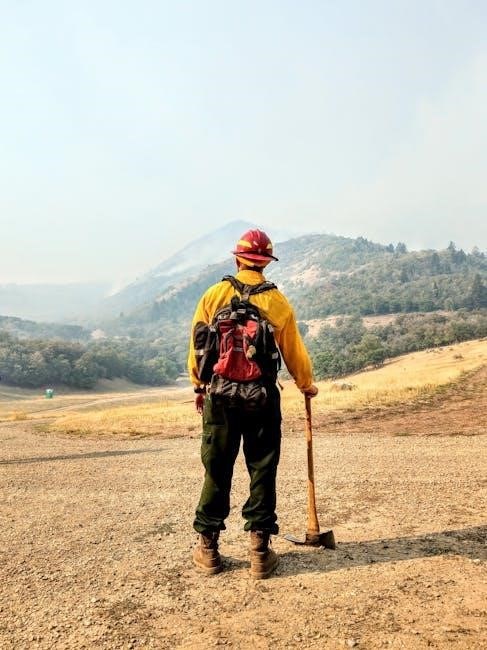Liz Lerman’s Critical Response Process is a widely-recognized method for fostering constructive dialogue and meaningful feedback on artistic works-in-progress. It emphasizes collaboration, growth, and structured communication, applicable across various creative fields.

The Critical Response Process by Liz Lerman
Liz Lerman’s Critical Response Process is a structured method for providing constructive feedback on creative works, emphasizing collaboration and growth through facilitated dialogue between artists, responders, and facilitators, widely recognized.

Steps of the Critical Response Process
The Critical Response Process, developed by Liz Lerman, is a four-step method designed to provide constructive feedback on creative works-in-progress. The process begins with Statements of Meaning, where responders share observations about what resonates with them in the work, focusing on specificity rather than general praise. Next, the Artist as Questioner step allows the creator to ask questions, guiding the dialogue toward areas they wish to explore or refine; The third step involves Neutral Questions, where responders pose questions that encourage deeper understanding without imposing opinions. Finally, responders share their Opinions and Suggestions, offering constructive feedback that respects the artist’s vision. This structured approach ensures meaningful engagement and fosters artistic growth.
Roles in the Critical Response Process
The Critical Response Process involves three distinct roles: the artist, the responders, and the facilitator. The artist presents their work-in-progress and is encouraged to ask questions to guide the feedback discussion. The responders are responsible for providing thoughtful and constructive feedback, focusing on observations, questions, and opinions that support the artist’s growth. They must avoid bringing personal agendas and instead prioritize the artist’s goals. The facilitator ensures the process follows its structured steps, maintains a respectful environment, and keeps the dialogue productive. Each role is essential to fostering meaningful dialogue and ensuring the process remains focused on the artist’s needs. By clearly defining these roles, the Critical Response Process creates a safe and collaborative space for artistic development and refinement.

Benefits of the Critical Response Process
The Critical Response Process fosters collaboration, encouraging constructive dialogue and artistic growth. It provides a structured, supportive environment for meaningful feedback, helping artists refine their work while maintaining creative integrity and confidence.
Encourages Constructive Dialogue
Liz Lerman’s Critical Response Process (CRP) is designed to foster constructive dialogue, ensuring feedback is both meaningful and actionable. By focusing on observations rather than opinions, participants create a safe space for artists to grow. The process begins with responders sharing specific, meaningful observations about the work, avoiding vague compliments or criticisms. This approach ensures the dialogue remains focused and productive, allowing the artist to gain insights without feeling defensive. The structured nature of CRP encourages active listening and empathy, transforming feedback into a collaborative rather than confrontational experience. This method not only enhances the quality of the work but also strengthens relationships among participants, fostering a culture of mutual respect and understanding; By prioritizing clarity and specificity, CRP helps everyone involved to communicate effectively and support the artistic process.
Fosters Artistic and Personal Growth
Liz Lerman’s Critical Response Process (CRP) is a transformative tool for both artistic and personal development. By fostering a safe and structured environment, CRP enables artists to gain new insights into their work, encouraging them to think freshly about their creative vision. The process empowers artists to refine their ideas and explore possibilities they may not have considered, while responders also grow through active engagement and thoughtful communication. This collaborative approach not only enhances the quality of the work but also strengthens the artist’s confidence and resilience. CRP’s emphasis on meaningful dialogue and constructive feedback allows participants to learn from one another, fostering mutual understanding and respect. Ultimately, the process becomes a catalyst for both artistic refinement and personal evolution, helping individuals to see their work and themselves in new and profound ways.
Applications of the Critical Response Process
The Critical Response Process is widely applied in education, business, and community settings. It enhances feedback practices in workshops, team meetings, and strategic planning, fostering collaboration and innovation across diverse disciplines.
Examples Across Different Fields
The Critical Response Process has been successfully implemented in various fields, including dance, theater, visual arts, and education. In dance, it helps choreographers refine their work by engaging with audience feedback. In education, it fosters collaborative learning environments where students and teachers exchange constructive insights. The process is also used in business settings to improve team communication and decision-making. For instance, in product development, it allows teams to provide structured feedback on prototypes, ensuring that innovations are refined based on clear, actionable insights. Additionally, in community organizations, the process facilitates dialogue and consensus-building during strategic planning. Its versatility makes it a powerful tool for any field requiring collaborative critique and growth.

Resources for Further Learning
Liz Lerman’s Critical Response Process is detailed in her 62-page guide, offering practical tools and insights. Additional PDFs and online materials provide further guidance for effective implementation and facilitation.
Liz Lerman’s Critical Response Process PDF
Liz Lerman’s Critical Response Process PDF provides a comprehensive guide to her renowned method for constructive feedback. This document outlines the four-step approach, including observations, questions, and opinions, ensuring meaningful dialogue. It also details the roles of the artist, responders, and facilitator, emphasizing collaboration and growth. The PDF serves as an essential resource for artists and educators, offering practical tools to enhance creative works. Available for download, it is a valuable reference for anyone seeking to implement this structured approach in their practice or classroom.
Additional Materials and Guides
Beyond the Critical Response Process PDF, additional resources are available to deepen understanding and application. Liz Lerman and John Borstel’s 62-page guide provides in-depth exploration, while workshops and online articles offer practical insights. These materials cater to educators, artists, and facilitators, ensuring comprehensive learning and effective implementation of the process in various settings.



